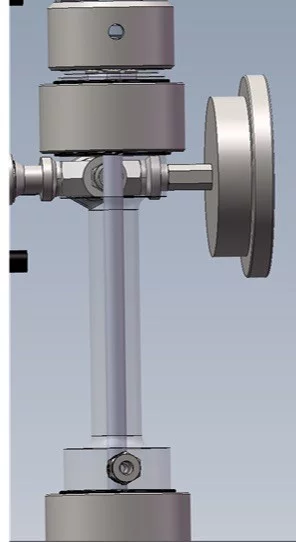The ReaVE (Reactive Vapor pErmeation technology) project, led by Chiara Pischetola, was started in 2024. The project focuses on the application of Le Chatelier’s principle to enhance products yields from equilibrium-limited reactions, taking carbon dioxide hydrogenation as case study. This is achieved by the use of a membrane rector permeable to only water which is constantly removed under reactive conditions, thus shifting the thermodynamic equilibrium towards methanol. The process is driven by a pressure swing and it requires a narrow temperature window to by selective. The use of catalysts proficient under such conditions is critical. This approach will provide benefits for both the environmental sector (i.e. new technology for enhanced methanol productivity from waste CO2) and economic sector (i.e. milder conditions with one-pot production-separation).
Research
Project motivation
One of the strategies to address the near-global net zero transition by 2050 is the development of a circular carbon economy based on the valorisation of captured carbon dioxide into commodity chemicals, such as methanol. Nonetheless, the reductive conversion of carbon dioxide with green hydrogen is far from being fully optimised being the main challenges linked to (i) limited conversion by reaction thermodynamics and (ii) detrimental effect of water (co-product of the hydrogenation reaction) on the catalyst life-time and catalyst activity, due to competitive adsorption. The ReaVe project aims to provide tangible improvements by combining material science, catalysis and chemical engineering concepts in a one-pot system.
Custom reactor set-up
The first step was to develop a new reactive concept able to couple the production (methanol catalysis) and separation (vapor permeation) steps. We have designed in collaboration with PARR® a membrane reactor with a shell-tube configuration. It consists in a flow set-up where an external stainless-steel tube (internal diameter 13 mm) can accommodate an internal smaller (external diameter 10 mm) gas-sealed ceramic tube which is internally coated by a homogenous layer of the hydrophilic material selected as membrane. The ceramic tube operates at high pressure with an inlet feed composed by the H2O + MeOH mixture and a gas carrier, whereas the pressure of the external shell is 1 bar. An inert sweep gas fed into the shell facilitates the inside → out transfer of water. Online micro-GC assesses the composition of the gases coming from the internal tube, while the water from the external shell is condensed in a cold trap for off-line analysis.
Material under investigations
CuO/ZnO/Al2O3. The benchmark for methanol synthesis is the industrial CZA catalyst based on the multicomponent CuO-ZnO-Al2O3 formulation. The structure-activity relationship of the material has been extensively studied over the past decades. In specific, the detrimental effect of water on the catalyst stability is well-known and multiple hypothesis have been proposed as rationale: (i) particles sintering, (ii) re-oxidation and (iii) Cu-ZnO interface restructuring. CZA is an ideal material to be tested under reactive pervaporation conditions to improve its life-time while gaining information on the deactivation mechanism.
Perovskite SrTiO3. The ideal temperature window, in terms of separation efficiency, for operating under pervaporation is ≤200 oC, The productivity of industrial CZA drops under this temperature range and the use of a “low-temperature” catalyst is advisable. We have developed a first-generation of perovskite SrTiO3 characterized by uncommonly high surface area. The laboratory-synthesised materials are used to support copper nanoparticles. Under specific activation conditions, SrTiO3 partially reduces with formation of oxygen vacancies at Cu/Ti-sites interface resulting in a selective methanol catalyst, tested in standard plug-flow reactor. The methanol productivity achieved at low (200 oC) temperature is such to make this material relevant for the optimization of the pervaporation process under efficient conditions.



